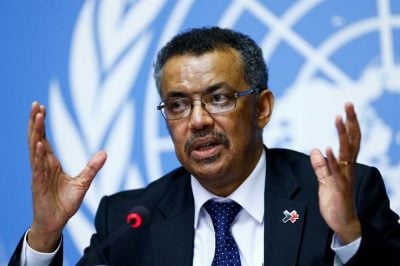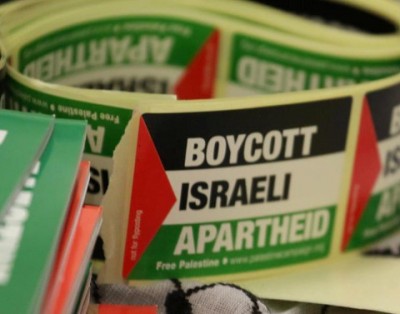500,000,000,000 Reasons to Scrutinize the US Plan for Nuclear Weapons

All Global Research articles can be read in 51 languages by activating the “Translate Website” drop down menu on the top banner of our home page (Desktop version).
Visit and follow us on Instagram at @crg_globalresearch.
***
The public debate about the future of the US nuclear arsenal is largely a controversy about strategy. But the outcome also has major implications for dollars and cents. The United States plans to spend more than $1.5 trillion over the next several decades to sustain and upgrade its nuclear delivery systems, associated warheads, and supporting infrastructure. The biggest bills for this effort, which are slated to hit over the next 10 to 15 years, pose a growing threat to other military and security priorities amid what most experts believe will be flat defense budgets. The cost of ongoing programs to buy new fleets of ballistic missile submarines, long-range bombers, and intercontinental ballistic missiles has generated the most attention.
Meanwhile, the exploding price tag of the National Nuclear Security Administration’s long-term plan to sustain and modernize the nuclear warheads and production facilities—now an exorbitant $505 billion—flies under the radar.
Now more than ever it’s important to scrutinize the National Nuclear Security Administration, which is a semiautonomous agency of the Energy Department. Most of the agency’s budget goes to contractors, though their contract mismanagement has repeatedly landed them on the Government Accountability Office’s high-risk list. Some projects have significantly exceeded initial cost estimates—in one case nearly eight times more than the initial price tag. While cost breaches of this magnitude at the Defense Department would have triggered a review that might have cancelled the programs, the National Nuclear Security Administration was able to waste billions with no threat of closure.
The agency’s past failures to complete major projects on time and on budget raise questions about its ability to execute a workload that has grown to unprecedented post-Cold War heights. Since the end of the Obama administration, the National Nuclear Security Administration weapon-activity spending has grown by roughly 70 percent. Last year, the agency requested a multibillion-dollar boost while sitting on $8 billion in unspent funds from past years.
Against this backdrop, nuclear-weapon hawks in Congress successfully pushed through a consequential change last year that gave the Pentagon much greater influence over the development of the National Nuclear Security Administration’s budget. This power grab will not only make it harder to rein in increasingly out-of-control agency spending but put other Energy Department national security programs at greater risk. As Congress moves to write annual defense authorization and appropriations legislation this summer, lawmakers should take steps to undo the Pentagon’s expanded authority and institute reforms in an attempt to reign in wasteful spending at the National Nuclear Security Administration.
Recent budget history of the National Nuclear Security Administration. This story begins in February 2020 when the Trump administration prepared its fiscal year 2021 budget request for the National Nuclear Security Administration. It requested $15.6 billion for the nuclear-weapon activities account, a staggering increase of $3.1 billion, or 25 percent, from the fiscal year 2020 appropriations and $2.8 billion more than planned a year earlier. The dramatic increase was propelled in part by cost overruns in programs inherited by the Trump administration and the cost of the additional capabilities the administration proposed.
The budget request was reportedly a controversial issue within the Trump administration and was not resolved until days before its public release on February 10, 2020. When nuclear-weapon spending boosters in Congress, along with the National Nuclear Security Administration leadership and some Pentagon officials, worried an initial version of the budget request was too low, they successfully convinced then-President Donald Trump to increase it.
One of the agency’s chief advocates, Senate Armed Services Committee chairman James Inhofe (Republican from Oklahoma), alleged that the Energy Department cut the Nuclear Weapons Council out of the budget development process until the last minute. The Nuclear Weapons Council is a powerful Pentagon body that coordinates the Defense and Energy Departments’ nuclear-weapon-stockpile responsibilities. In response to the turmoil, then-chair of the council Ellen Lord issued new planning guidance to ensure that the council reviewed the budget earlier.
Problem solved, right? Apparently not.
Inhofe, with the support of then-committee ranking member Senator Jack Reed (a Democrat from Rhode Island), included provisions in the Senate version of fiscal year 2021 National Defense Authorization Act to alter the relationship between the Energy Department and the Pentagon. Most egregiously, the provision would have given the Nuclear Weapons Council (helmed by an undersecretary of defense) the power to overrule the energy secretary (a cabinet member) on the size and scope of the National Nuclear Security Administration budget.
Inhofe claimed the aim of the legislation was to ensure greater coordination between the Defense and Energy Departments and strengthen transparency to Congress. But a plain reading of the language suggests a far more sweeping intent than streamlining nuclear bureaucracy. Namely, the legislation removed obstacles to continued astronomical National Nuclear Security Administration budget growth, even if that growth would force other Energy Department national security programs to foot the bill. Indeed, the Trump administration proposed to cut the Energy Department’s program to clean up legacy nuclear waste from the Cold War arms race to pay for a last-minute, unplanned increase. The increase also required transferring money away from the Pentagon budget, notably the Navy’s shipbuilding account.
Inhofe’s gambit sparked a flurry of bipartisan opposition in the Senate and House. The final Senate version of the authorization bill excised the language giving the council the power to veto the energy secretary on the National Nuclear Security Administration budget. The lower chamber’s authorization bill included a provision that would expand the membership of the council, and its appropriations legislation sought to bar the council from expanding its budget role.
The final version of the authorization bill, however, retained much of the Senate language, and the House provisions were dropped from the final appropriations bills.
The National Nuclear Security Administration budget must now go to the Nuclear Weapons Council before it goes to the Office of Management and Budget. The energy secretary must note any potential disagreement of the council in the final budget submission. And if the council disagrees with the proposed submission, then the council’s preferred budget must be sent to Congress along with the actual request.
If executed as written, the new law effectively makes the Nuclear Weapons Council the decision authority for the National Nuclear Security Administration’s budget. As a result, the energy secretary and the Office of Management and Budget will have reduced leverage in the development of the budget. It will also make it difficult for the president to overrule the council without getting into a messy public spat with congressional nuclear hawks about why they are going against the advice of the Pentagon.
Contrary to Inhofe’s conspiratorial claims, the main problem in need of a solution isn’t that the Defense Department is being cut out of the development of the National Nuclear Security Administration’s nuclear modernization budget or that better coordination is needed. The central problem is that the agency’s nuclear modernization budget is skyrocketing.
The growth of the agency’s weapon-activity budget almost defies belief. Projected spending on nuclear-weapon activities has risen to $505 billion, according to the agency’s 25-year plan published last December. That represents a staggering increase of $113 billion from the 2020 version of the plan.
$113 billion. In one year.
This kind of stunning growth illustrates what critics of the National Nuclear Security Administration’s excessive plans have been warning about for years: low-balled cost estimates, an inexecutable program, damaging opportunity costs, and a significant agency credibility deficit. The mounting price tag and impracticality of the scope of and scheduled goals for many of the agency’s nuclear warhead and infrastructure replacement efforts merit far greater scrutiny than Congress has provided to date.
Needed now: National Nuclear Security Administration budget reform and oversight. The Nuclear Weapons Council does not need expanded authority. Quite the opposite in fact. The council includes the undersecretary of defense for acquisition and sustainment, the vice chairman of the Joint Chiefs of Staff, the National Nuclear Security Administration administrator, the undersecretary of defense for research and engineering, the undersecretary of defense for policy, and the commander of US Strategic Command. Together, these individuals oversee one slice of the total national defense budget. An increasingly large slice to be sure. But just one slice.
The council focuses on ensuring that existing nuclear-weapon sustainment and modernization plans proceed full steam ahead. Assessment of affordability and especially opportunity costs is a lower priority. As Senators Lisa Murkowski (Republican from Arkansas) and Joe Manchin (Democrat from West Virginia) wrote last year, the Nuclear Weapons Council “has a narrower focus than the Secretary of Energy, and its recommendations would likely prioritize nuclear weapons at the expense of other critical missions undertaken by” the Energy Department.
If Congress allows Pentagon leaders to add their own spending priorities to other agencies’ budgets without any requirement to propose offsets, spending on nuclear weapons will likely go in only one direction: up.
Instead of giving the Pentagon more free rein, Congress should roll back the Nuclear Weapons Council’s expanded powers and seek greater oversight of how the body generates requirements for the arsenal and for the National Nuclear Security Administration.
As former agency administrator Frank Klotz noted last year, most of the voting seats on the council belong to the Pentagon, making it “just an invitation for the [Defense Department] to constantly grade the National Nuclear Security Administration’s homework without its homework being graded in a reciprocal sort of way.”
To address this problem, the deputy energy secretary and deputy director of the Office of Management and Budget should be added to the council as full voting members. (Current law only allows the Office of Management and Budget to participate in the council’s deliberations in an advisory capacity.) This would ensure a much-needed, greater focus on affordability and balancing nuclear-weapon spending against other national security priorities.
Given that the council’s actions also impact US arms control and nonproliferation strategy, the undersecretary of state for arms control and international security and the deputy national security advisor should also be added to the council as advisors.
The National Nuclear Security Administration has a long history of mismanaging its significant resources. In response, Congress should offer reform and oversight, not a blank check to steal resources from other national security priorities.
*
Note to readers: Please click the share buttons above or below. Follow us on Instagram, @crg_globalresearch. Forward this article to your email lists. Crosspost on your blog site, internet forums. etc.
Kingston Reif is the director for disarmament and threat reduction policy at the Arms Control Association, in Washington, DC, where his work focuses on nuclear disarmament, preventing nuclear terrorism, missile defense, and the defense budget. Follow him on Twittter: @KingstonAReif.
Mandy Smithberger is the director of the Center for Defense Information at the Project On Government Oversight, in Washington, DC, where her work focuses on Pentagon reform and the defense budget. You can follow her work @StrausReform.
“Towards a World War III Scenario: The Dangers of Nuclear War”
by Michel Chossudovsky
Available to order from Global Research!
ISBN Number: 978-0-9737147-5-3
Year: 2012
Pages: 102
Print Edition: $10.25 (+ shipping and handling)
PDF Edition: $6.50 (sent directly to your email account!)
Michel Chossudovsky is Professor of Economics at the University of Ottawa and Director of the Centre for Research on Globalization (CRG), which hosts the critically acclaimed website www.globalresearch.ca . He is a contributor to the Encyclopedia Britannica. His writings have been translated into more than 20 languages.
Reviews
“This book is a ‘must’ resource – a richly documented and systematic
diagnosis of the supremely pathological geo-strategic planning of US
wars since ‘9-11’ against non-nuclear countries to seize their oil
fields and resources under cover of ‘freedom and democracy’.”
–John McMurtry, Professor of Philosophy, Guelph University
“In a world where engineered, pre-emptive, or more fashionably
“humanitarian” wars of aggression have become the norm, this challenging
book may be our final wake-up call.”
-Denis Halliday, Former Assistant Secretary General of the United Nations
Michel Chossudovsky exposes the insanity of our privatized war
machine. Iran is being targeted with nuclear weapons as part of a war
agenda built on distortions and lies for the purpose of private profit.
The real aims are oil, financial hegemony and global control. The price
could be nuclear holocaust. When weapons become the hottest export of
the world’s only superpower, and diplomats work as salesmen for the
defense industry, the whole world is recklessly endangered. If we must
have a military, it belongs entirely in the public sector. No one should
profit from mass death and destruction.
–Ellen Brown, author of ‘Web of Debt’ and president of the Public Banking Institute
















